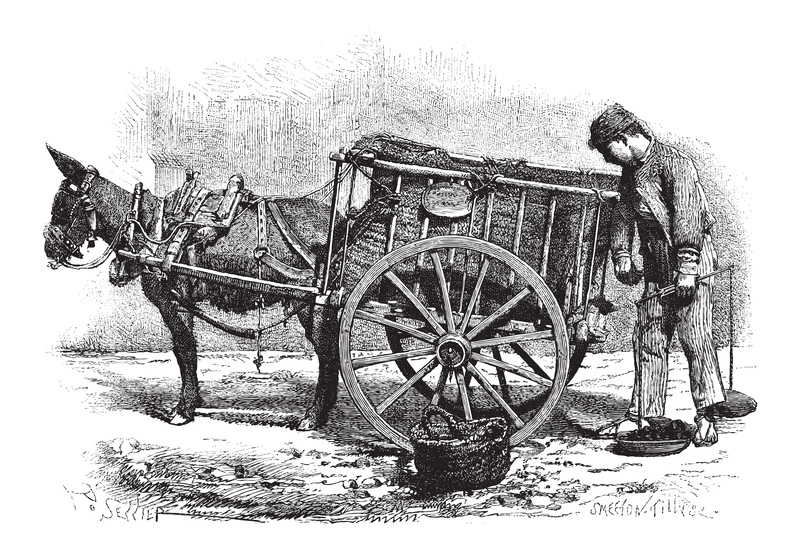A Step-by-Step Guide to PPE Waste Disposal
Personal Protective Equipment (PPE) has become a daily essential in various industries and, more recently, our everyday lives. However, the increased use of PPE like masks, gloves, and gowns has led to rising concerns about how we manage and dispose of PPE waste. This comprehensive guide provides you with an in-depth, step-by-step approach to effective PPE waste disposal--ensuring environmental safety, regulatory compliance, and public health protection.
Understanding PPE Waste and Its Impact
Before diving into the practical steps of PPE waste disposal, it's crucial to understand what PPE waste is and why its proper management is vital.
What is PPE Waste?
PPE waste refers to any discarded personal protective equipment, including but not limited to:
- Disposable face masks
- Nitrile, latex, or vinyl gloves
- Gowns and protective coveralls
- Face shields and goggles
- Disposable shoe covers and hairnets
These items are primarily used in healthcare, industrial settings, laboratories, and even in public areas to prevent the spread of contaminants and infectious agents.
Why Is Proper PPE Waste Disposal Important?
- Public Health Risk: Improperly discarded PPE can carry harmful pathogens, posing infection risks to sanitation workers and the community.
- Environmental Spillover: Many PPE materials are non-biodegradable and contribute to land and marine pollution if not processed properly.
- Regulatory Compliance: Different regions have specific rules for PPE waste disposal. Failure to follow these can result in hefty penalties.
Knowing the right way to dispose of PPE waste is not just a matter of good practice--it's a necessity for sustainable living and occupational safety.

Step-by-Step Process: How to Dispose of PPE Waste Safely
Effective PPE waste management involves multiple stages, from collection to final disposal. Here is an easy-to-follow guide for organizations, healthcare units, and individual users:
Step 1: Segregate PPE Waste from General Waste
- Identify PPE Materials: Ensure all contaminated PPE is clearly separated from other types of waste.
- Use Color-Coded Bins: Employ distinct, clearly marked containers for different waste streams (e.g., yellow bins for infectious waste).
Tip: In healthcare and industrial settings, PPE waste disposal containers should be leak-proof and have a secure lid to prevent accidental exposure.
Step 2: Handling and Storage of PPE Waste
- Wear Appropriate PPE: Always use gloves, masks, and, if necessary, protective gowns while handling PPE waste to prevent cross-contamination.
- Bag the Waste Properly: Double-bagging is recommended for highly contaminated items, using sturdy, puncture-resistant bags.
- Label the Bags: Clearly mark the bags as 'PPE Waste' or 'Biohazard' to alert waste handlers.
Proper storage reduces the risk of leaks and exposure, especially if collection is not immediate.
Step 3: Transportation of PPE Waste
- Use Designated Routes: In large facilities, transport PPE waste using specified routes and a dedicated trolley or cart.
- Minimize Handling: Reduce direct contact; ideally, bags or bins should be handled only at pick-up and drop-off points.
- Transport Frequency: Remove and transport PPE waste frequently to prevent the accumulation and spread of contaminants.
Step 4: Disposal Methods for PPE Waste
- Incineration: The safest and most common method, especially for infectious and hazardous PPE waste. High-temperature incinerators destroy pathogens and reduce waste volume.
- Autoclaving: This method uses pressurized steam to disinfect waste before disposal in landfills. Suitable for large healthcare centers.
- Landfill Disposal (after pre-treatment): For non-infectious PPE waste, pre-treated materials can be sent to authorized sanitary landfills.
Note: Never burn PPE waste in open areas or discard it in household garbage. This causes air pollution and potential health hazards.
Step 5: Final Decontamination and Hygiene Practices
- Hand Hygiene: Immediately sanitize your hands or wash thoroughly with soap and water after handling PPE waste.
- Disinfect Contact Surfaces: Clean and disinfect any surfaces or equipment that come into contact with the waste.
Following these steps ensures a safer working environment and protects both workers and the surrounding community.
Special Considerations for PPE Waste Management
Home and Community Settings
With daily mask and glove use becoming commonplace, households also need to practice responsible PPE waste disposal. Here are guidelines for individuals:
- Do not litter or flush masks and gloves down toilets.
- Double-bag used PPE and seal tightly before placing in regular trash bins.
- Wash hands immediately after disposing of PPE.
- Encourage community-wide awareness on proper PPE waste segregation and disposal.
Healthcare Institutions
Hospitals, clinics, and testing centers generate high volumes of hazardous PPE waste. To manage this safely:
- Enforce strict use of marked containers and regular training for staff.
- Partner with licensed biomedical waste management companies for collection and treatment.
- Document and audit PPE waste disposal processes periodically.
Industrial and Laboratory Settings
Industries using chemical or biological PPE must adhere to both hazardous waste and PPE waste disposal regulations. Important points:
- PPE exposed to dangerous chemicals must never be disposed of with normal waste and requires specialized processing.
- Maintain detailed logs for hazardous PPE waste generation and disposal.
- Train employees on safe handling, emergencies, and spill response procedures.
Environmental and Legal Concerns of PPE Waste
Environmental Issues
- Most disposable PPE items, such as masks and gloves, are made from plastics that take centuries to degrade.
- PPE waste threatens marine life when it enters waterways through improper disposal.
- Burning PPE waste in open areas releases toxic substances, impacting both air quality and public health.
Compliance With PPE Waste Disposal Regulations
There are strict local and international guidelines regulating the safe disposal of PPE waste. Major standards and agencies include:
- WHO (World Health Organization): Offers frameworks for healthcare PPE waste disposal.
- OSHA (Occupational Safety and Health Administration): Sets requirements for occupational handling of hazardous waste.
- EPA (Environmental Protection Agency): Maintains standards for environmental impacts of PPE waste disposal.
Always stay updated with regulations in your region, as non-compliance can result in penalties and lawsuits. Proper training and documentation are a must.
Innovative Solutions for Sustainable PPE Waste Disposal
As PPE usage rises globally, sustainability in PPE waste management is more important than ever. Here are emerging solutions:
Recycling of PPE Materials
Some manufacturers now offer recycling programs for PPE, converting used masks and gloves into building materials or fuel. Look for local programs and educate staff and communities about the availability of these services.
Biodegradable PPE
Switching to PPE made from biodegradable materials can greatly reduce environmental impact. While not yet widespread, demand for such solutions is growing.
Waste-to-Energy Technology
Modern incinerators can convert PPE waste into energy, reducing landfill burden while providing a renewable energy source. Support policies that encourage such technologies.
Awareness and Training
Encourage ongoing education on PPE waste segregation, the harms of improper disposal, and the benefits of sustainable solutions. Effective training leads to positive behavioral change.

PPE Waste Disposal: Frequently Asked Questions
Can I recycle used PPE like masks and gloves?
Most local programs do not accept used PPE for standard recycling due to the risk of contamination. However, specialized recycling vendors may exist for specific PPE types. Always check with local authorities before attempting to recycle PPE.
How do I safely dispose of used PPE at home?
- Place used PPE in a plastic bag, seal it tightly, and dispose of it with household trash.
- Never throw PPE on the ground or flush it down the toilet.
- Wash your hands thoroughly after handling PPE waste.
What if my workplace does not provide PPE waste bins?
Report this to your health and safety officer. Proper provision and labeling of PPE waste bins are mandated by occupational health guidelines in most sectors. You can also use your own sealed bags as a temporary solution until the issue is resolved.
Conclusion: The Importance of Responsible PPE Waste Disposal
Effective and responsible PPE waste disposal is vital not just for safety and hygiene, but for protecting our planet. By following this step-by-step guide to PPE waste disposal, individuals and organizations can:
- Protect public health by minimizing the spread of infections.
- Comply with legal and regulatory standards, avoiding costly fines and penalties.
- Guard the environment against plastic pollution and hazardous spills.
- Contribute to a more sustainable future by supporting recycling and new technology.
Remember, the path to a safer, cleaner world starts with informed action at every step--from PPE waste segregation to final disposal. Make sure you and your team are trained, vigilant, and proactive in managing PPE waste the right way.
For up-to-date advice and local regulations, consult your area's health and environmental authorities. Share this guide and support a community-wide commitment to safe and eco-friendly PPE waste disposal.
